They say life is better with an English bulldog.
The English Bulldog known as simply a bulldog (or a British Bulldog) is famous for its flat muzzle face, and if you ever encounter one, I’m sure the first thing that comes to mind is, “Oh, what a grumpy face, arghhh”
It’s an appearance you’ll never forget or mistake for another. The distinct flat look face comes from years of inbreeding and genetic mutation.
This purebred dog has a lengthy history of being a “Bloody Bull,” but it has now become one of the most adored and sought-after pets, as with all things that should be left in the past.
You feel a soft grunt, Bully comes to lay down beside you.
Ah, adopting a dog was one of the best things you ever did.
The temperament of an English Bulldog may be both gentle and friendly, making them the ideal companion. They are considered to be quite loving and caring towards their pet parents, and a bonus point would be their fondness towards children in particular.
An English bulldog’s temperament is usually the reason why most dog lovers prefer them as they are a homebody and get along well with everyone in the household.
TLC for both you and your pet.
Here’s a fun fact about why it’s named a “Bloody Bull”
The English bulldog was used for bull-baiting, which was a method of training dogs, specifically an English Bulldog, to pursue and attack a bull as a game entertainment in medieval Europe.
Thus, the tag name “Bloody Bull” stuck with the mighty dog. The sport was later forbidden by the Cruelty to Animals Act of 1835, which prohibited the use of animals for baiting.
Table of Contents
Breed Picture
Quick Facts

Average Height: 31- 40 cm
Average Weight: 40-50 pounds
Dog Group: Non-Sporting
AKC Ranking: 5/200
At a Glance:
The English bulldog size is small to medium and measures between 31 and 40 centimeters in height. And English Bulldog weight falls somewhere between 40 and 50 pounds for females, and 50 pounds for males.
An English bulldog's lifespan is short in comparison to other dogs, with an average of only 8-10 years, and in rare cases 13 years. This is mainly because several of these English Bulldogs suffer from genetic illnesses linked to cardiovascular issues.
Due to their small stature, English bulldogs can adapt to and live happily in residences of any size, large or little, and require very little activity. They also don't bark as much as other dog breeds, which makes them perfect for living in an apartment.
When they bond with their pet parents, English bulldogs are very affectionate and devoted to them, yet they can be possessive with their space and with their pet parents if outsiders or other pets try to invade. Though most English bulldogs are amiable, it is a good idea to introduce them to activities that help them to bond and socialize at a young age.
English Bulldogs do not bark frequently, but they do make a variety of other noises such as wheezing, grunting, and snoring.
Here’s the catch: once they start barking, they can be stubborn and difficult to stop!
Bark Bark Bark!
When it comes to climate, English bulldogs do not have the tolerance to hot as well as cold temperatures since it causes breathing problems.
English Bulldogs are the least performing breed in terms of action. They can be stubborn and training an English bulldog can be difficult. The key is to be patient and stick to brief and fun-filled activities. Treats can also be used to motivate them to undertake activities or follow directions.
“Not too much” is the way around exercises with English bulldogs since too much can be rather taxing and harmful for the dog instead of being helpful. They require the bare minimum when it comes to exercise needs, an hour or a 30-minute walk will suffice in maintaining a good physique and health for an English Bulldog
Because of their short hair, English bulldogs, like all dogs, require regular cleaning and grooming. It is recommended that you bathe them just once every week or even less depending on the activity and lifestyle of the pet.
English Bulldog breeds are highly allergic and this is primarily because of shedding. It sheds small, pointed hair that clings to every nook and corner, and even infiltrates the air you’re breathing.
An English bulldog shedding can cause problems for people who are prone to allergies.
Yep, that’s going to be a hard “No”
An English bulldog’s price varies mainly on the breeder, pedigree, bloodline, and other factors. The average cost of an English bulldog in the US is around $2,500 with an estimate that can go up to even a whopping $10,000.
Bloodline, I tell you.
Attention! DogIsWorld does not promote buying of dogs. The English bulldog price column given here is for the reader’s convenience. We strongly support the idea of rescuing and adopting dogs.
[fun fact]
An English bulldog puppy from a show dog or champion parents can cost up to $25,000 because of their popularity.
About

The term cute means “Ugly but adorable”, and that is exactly what English Bulldogs are.
The English Bulldog origin is a rather bloody one, they are a crossbreed between a pug and an Asiatic mastiff. The first of this breed is said to have originated from the British isle when the game “bull-baiting” started gaining popularity among the Europeans.
These English bulldogs weigh around 40-50 pounds for both females and males. Due to their small stature, there isn’t much difference between the two. As for an English bulldog height, it falls between 31 and 40 centimeters for both males and females.
Despite the daunting looks these dogs have, they are quite the opposite. Remember the saying, “don’t judge a book by its cover”?
Yes, that is valid in this situation.
These particular breeds of dog, namely, the English bulldogs are known to be very doting and caring towards their pet parents and a bonus point would be their affection towards children in particular.
And as far as barking is concerned, we have a definite winner if the game is “Try not to bark.”
They also tend to sleep more than staying awake, making them the perfect nap partner if you love your power naps and sleep time.
Who doesn’t want a furry cuddle partner, right?
Although due to the extreme crossbreeding of dogs, they are now susceptible to every genetic disease imaginable, making the English bulldog’s lifespan lower than expected with just an average of 8 to 10 years as compared to other breeds of dogs.
Ever wondered why an English bulldog breed is so expensive?
This is because this particular breed is highly popular among dog lovers, another factor would be because they are unable to give birth normally and need a C-section.
Now let’s get to the bloody history of the English bulldogs. Woof! Woof!
History

It was a “Bull” dog, as its name implies, which was bred for the popular medieval sport of Bull-baiting.
They were even used for Bear-baiting which was a means of teaching dogs, particularly an English Bulldog, to pursue and attack a bull as a game of entertainment throughout the 13th to 18th century.
Because the major goal of the game was for the dog to grasp onto the bull’s nose and drive it to the ground, dogs with flat faces [Brachycephalic] were favored.
The shorter muzzle length resulted in more pressure if the dog grabbed the front teeth, while the broader muzzle offered more space for exceptional muscular clamping at the same time allowing them to breathe and attack.
The sport was later banned by the Cruelty to Animals Act of 1835 which prohibited the use of animals for baiting.
Wait a minute, these canines don’t look anything like what they did before!
The early English bulldog breed resembled the English bulldogs of today, but they were larger and heavier. The English bulldog that we have today is the consequence of centuries of severe techniques and selective breeding.
But that’s not all in the history of English bulldogs! They have a clean and agricultural past as well.
The first English bulldog breed was domesticated with the purpose of using them as working dogs in the field before the intense cross-breeding.
They were bred from hunting and guardian bulldogs for the sake of the sport, which demanded an intense degree of courage and power, and were known for their savage disposition and vicious character.
They are now currently one of the most adored and popular dog breeds as a companion to humans.
Facts Theatre
Parenting And Care

When you have an English bulldog, it is important to understand the maintenance and care of an English bulldog.
The maintenance can range from medium to high depending upon the condition of your pet.
Dental Care
Like most dogs, their teeth are also vulnerable to gum disease, so brush your pet’s teeth and gums once a day to prevent it.
An English bulldog’s muzzle is short making the placement of the teeth different compared to other dogs, thus regular brushing of teeth is very important to prevent gum diseases.
Treat them to some crunchy foods to keep their teeth strong and healthy. Do not by any means use regular human toothpaste that is not for canine use.
After meals, make sure to check if any food particles or moisture are stuck in the wrinkles, which could cause dog irritation and in extreme cases lead to skin infections.
Take Care Of Those Floppy Ears
Ear infections are not an uncommon occurrence among dogs; so inspect and clean the ears of your dog occasionally but be very careful as they are very sensitive.
This can help avoid as well as detect any ear problems.
Kenpartment Care
English Bulldogs, when it comes to tolerating temperature, are a bit of a mixed bag.
These doggos cannot stay in cold weather for too long because their bodies can’t warm up, yet again they also can’t stay in high heat, because it can cause breathing problems.
Make sure he has a decent bed as well; as your pet ages, the likelihood of joint problems and arthritis grows, and a proper bed can help reduce these pains.
It is also necessary to keep an English bulldog’s weight as extra weight gain can add more problems to it.
Pets And Walks
Keeping your English bulldog healthy through exercise is important.
But worry not! They do not need much exercise.
All they require is the bare minimum when it comes to exercise needs, an hour or a 30-minute walk will suffice. Too much exercise can result in joint issues for the dog as they are short and stout.
Personality And Temperament

The AKC (American Kennel Club) classifies the English bulldog as a non-sporting dog, which indicates they are good house dogs who will do well sitting at home and being a loyal companion to you.
Although they’re lovable, it is best to start socializing and making your pet bond at an early age. Early socialization is a must for any dog breed, and so, you must make sure that your pet socializes to be compatible with other people and pets.
The temperament of an English Bulldog is heavily influenced by the setting he was raised in.
Don’t be fooled by the melancholy downturned face of an English bulldog; despite their appearance, they are considered as one of the friendliest canine breeds.
They can be sociable or reserved, but you can count on them not to bark or pounce when a visitor arrives.
They are also very friendly with youngsters and get along well with them.
But like their stern face, they tend to be very stubborn, and training an English Bulldog can be a bit of a task.
They tend to be very stubborn and it isn’t an easy task to train an English bulldog, due to their low attention span.
But don’t worry, “training an English bulldog” can become easy when you keep in mind that the key to overcoming the low attention span is to be patient, sticking to brief and quick fun-filled activities like tug of war.
Since they happen to be the least performing breed, an added method will be using treats as a way to entice them to perform activities or follow instructions.
Once your pet decides they don’t want to train or listen to a certain instruction, they are headstrong and will stick by their decision.
It can take multiple tries for your to listen to a command or even understand one.
English bulldogs can also be very bold and will not be afraid to hold their ground when they sense a possible danger over their pet parent, as well as their territorial property.
Although they don’t bark much, their appearance is enough to scare an intruder off.
Colors And Grooming
There is also a rare English bulldog color called Merle, where the coats of these dogs are usually black, brown, cream, fawn, or a mixture of white and dark colors.
The following are steps a pet parent must take to groom an English Bulldog.
Coat Care
English bulldog shedding is high, so be prepared for a lot of cleaning with these ones.
They do not need extensive grooming and a regular grooming session once every few weeks will suffice since excessive shedding can become a problem if left uncared for.
If you are prone to allergies, an English bulldog shedding can be an issue for your health.
For short hair dogs like English Bulldogs, a relaxing bath and a nice brushing are especially essential. Remember to wash your English bulldog’s wrinkles or folds as well when bathing them.
Bathing them only once a week, or even less is recommended, depending on the activity and lifestyle of the pet.
It is also important to clean their fur coat with a cotton ball or wipes and apply a wrinkle ointment or topical rash lotion to prevent infections and skin diseases.
Pawdicure
Do not forget to trim the nails of your pet as overgrown nails can hinder the movement of your pet.
Keep the nails of your pet neat and clean by getting it clipped every month.
Are you afraid to trim the nails of your English Bulldog?
Here are some tips:
1. Make sure you have the right nail clippers by considering your English bulldog’s size.
2. Do not cut more than two millimeters, do make sure that the nails are overgrown before clipping them.
For more tips and details, you can visit how to cut trim dog nail’s blog by AKC.
Feeding
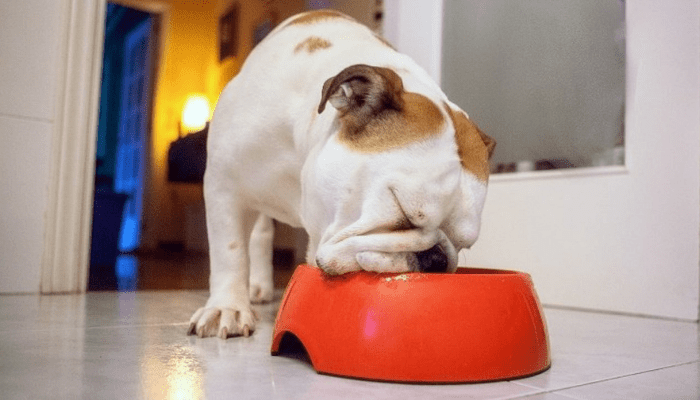
“Woof, woof, woof.”
“NO, Bully, you can’t eat this chocolate,” you say.
Despite the pleading puppy eye, you turned away knowing very well, the vet had warned you not to ever give chocolates to a dog.
Just as you feed your body the right nutrition and food, it is equivalently important to do the same for your pet. In addition, it is also vital to keep in mind the age factor and average weight of an English bulldog while feeding your pet.
Establishing a good and healthy feeding habit is important, maintaining a timely routine will also prevent snack-feeding your English bulldog which is not only inconvenient but can also be unhealthy to the dog.
1. Puppy ( 8 weeks to 12 months)
The 8-week period is typically when an English bulldog puppy is adopted into a new home; nevertheless, it is critical for the puppy to spend time with his mother and siblings before being placed in a new home, as the pup must be fed on the mother’s milk.
Food for an english bulldog puppy should be easy to consume.
An English bulldog at 8 weeks old must be fed and looked after consistently.
Your English bulldog puppy must be fed 1.5 cups of food three times a day from the timestamp of 8-12 weeks.
The growth spurt will occur after the 12th week, at which point the food for the English bulldog can be gradually increased.
After the third month, the English bulldog should be fed half a cup of puppy food twice a day until the 12th month.
Do make sure the food is easily reachable since the short muzzle can prove disadvantages to them.
2. Adult (14 months to 5 years)
Congratulations! Your English bulldog is finally an adult now.
It’s time to adjust your English bulldog’s diet, but you can do so gradually over time rather than all at once, as this can cause stomach problems.
Each time you feed your puppy, mix in the new food product with his regular meal to help him get used to it.
Also, adult food might be dry compared to food for an English bulldog puppy, so make sure to provide plenty of water to drink.
These lil pups should be fed three small meals per day until they turn one, at which point they should be fed a medium-sized meal twice a day.
As a pet parent, remember to keep your English bulldog’s weight under control, as excess weight can be dangerous.
3. Senior Dog (9 years and above)
As they get older, their stocky bodies can become a significant concern, resulting in aching joints.
Make sure to maintain the average weight of an english bulldog to prevent health issues
The food for an English bulldog should include lots of fresh, raw wet food, as dry food might be difficult for them to digest.
To avoid obesity, feed a low-calorie diet, but be sure to include appropriate nutrients like calcium, magnesium, zinc, and potassium to help fight and prevent health problems.
Health and Vaccinations

The health of an English bulldog is a big worry, as they are prone to a variety of health problems as a result of genetic mutations. Due to several years of inbreeding, they are now prone to various inborn illnesses making the English bulldog’s lifespan shorter
The following are some of the most common health problems associated with them:
Brachycephalic Airway Syndrome
The narrow noses of English bulldogs are caused by their small muzzles and facial features, which cause respiratory difficulties such as trouble breathing, eating, and chronic discomfort.
Obesity and excess weight gain can exacerbate such health problems, thus maintaining and monitoring your English bulldog’s weight is critical, and try not to cross the English Bulldogs average weight (40-50 pounds)
Brachycephalic Ocular Disease
These grumpy looking doggos are prone to ocular disorders such as protruding eyes, inability to close eyes, and excessive skin folds due to various anatomical characteristics of the skull. All of these abnormalities can result in pain and reduced eyesight.
Canine Hip Dysplasia
The most prevalent breed to suffer from hip dysplasia is the English bulldog.
It occurs when the joints are not properly developed to fit together, causing the dogs a lot of pain and damaging their cartilage, which gets worse as they get older. Because hip dysplasia is a genetic disorder, there is no cure.
Cherry Eye
Another health issue that is most common in English Bulldogs is the cherry eye. It becomes inflamed when a tear occurs in the gland of the dog’s eyelid. A cherry eye will not go away on its own and the dog will need to be sent to the veterinarian.
Skin Fold Dermatitis And Eczema
Another consequence of Brachycephaly is that the creases and folds between the skin can cause infections because they are warm and moist, creating a breeding ground for bacteria to thrive.
On the other hand, they are also victims of eczema which causes itchy, dried-out skin that can turn into a scaly rash.
Vaccinations
Like all dogs, your English bulldogs too require vaccination:
Rabies
Louis Pasteur did not potentially lose his license to practice medicine because you did not have your pet vaccinated!Jokes aside, this is considered an obligatory vaccination and is required by law for pet parents to vaccinate their dogs against rabies
Bordetella Bronchiectasis
It is a major cause of kennel cough, it produces violent coughing fits, vomiting, and, in extreme situations, death. It is best to get your pet vaccinated to avoid infectious bacterial coughing caused by it.
Canine Distemper
Since this disease affects the respiratory, gastrointestinal, and nervous systems, it’s critical to receive a series of immunizations for your English bulldog puppy before they reach full maturity in order to build resistance.
Canine Hepatitis
This is an infectious condition that causes liver inflammation and can be transferred by direct contact. There is no treatment after you’ve been infected, although the symptoms can be managed. This is also an important vaccination that your dog should have.
To know more about it, take a look at this comprehensive immunization information
Frequently Asked Questions
Despite their serious appearance, English bulldogs are not hostile toward their pet parents or familiar individuals; they are quite friendly and unconcerned, but they can become aggressive with unfamiliar and unknown faces, as is the case with all other animals.
All bulldogs are descended from a parent bulldog, the English bulldog, but owing to cross-breeding with other breeds, they now have very distinctive and distinct appearances.
English bulldogs are very faithful and affectionate. They are also highly affectionate toward children, making them an ideal pet for families with both adults and children.
English bulldogs are rather quiet compared to other dog breeds, but they do make a lot of other noises like snoring and wheezing. That's not all; once an English bulldog starts barking, it can be tough to get them to stop.
Dogs with flat faces (Brachycephalic) were preferred because the main purpose of the game was to grab the bull's nose and drive it to the ground. The short muzzle was to add more pressure and the broad muzzle allowed them to breathe while biting the nose of the bull during the game.
Similar breeds
Woof Woof
Greetings, dog lovers and pet parents!
This is all about the English Bulldogs and their bloody history to date!
Hope you enjoyed reading about it!
Do comment below what you think about this lovely dog breed, and if you ever thought about adopting an English bulldog, don’t forget to save this for future reference 🙂
Don’t forget to share this article with someone who adopted an English Bulldog or is planning to.
We also have socials that we update regularly!!
Check out our Instagram and Youtube
Happy Petting To Y’all!



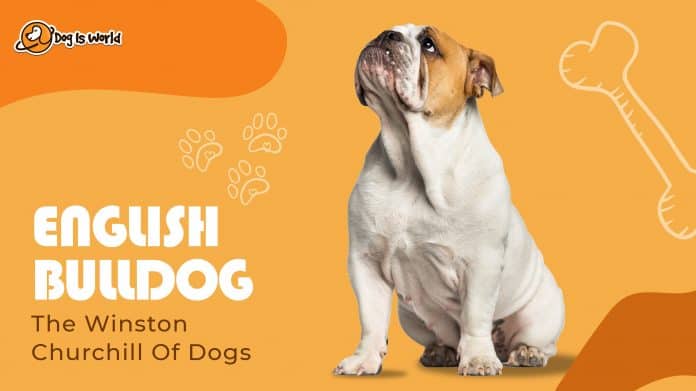


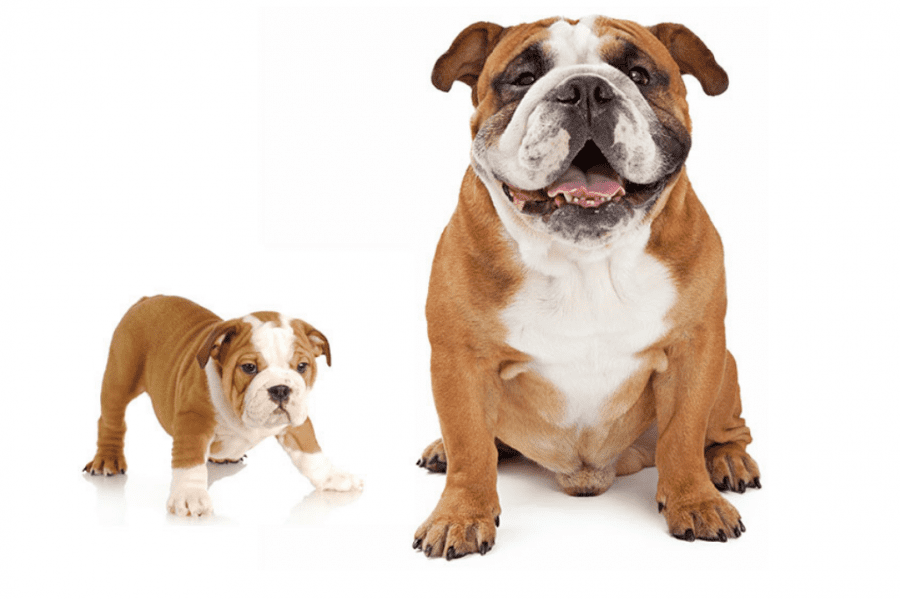

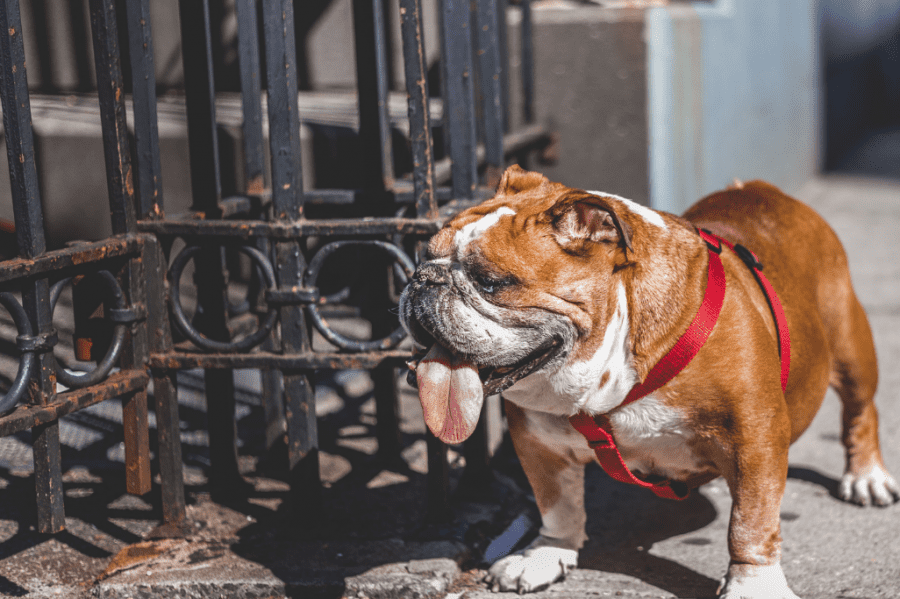

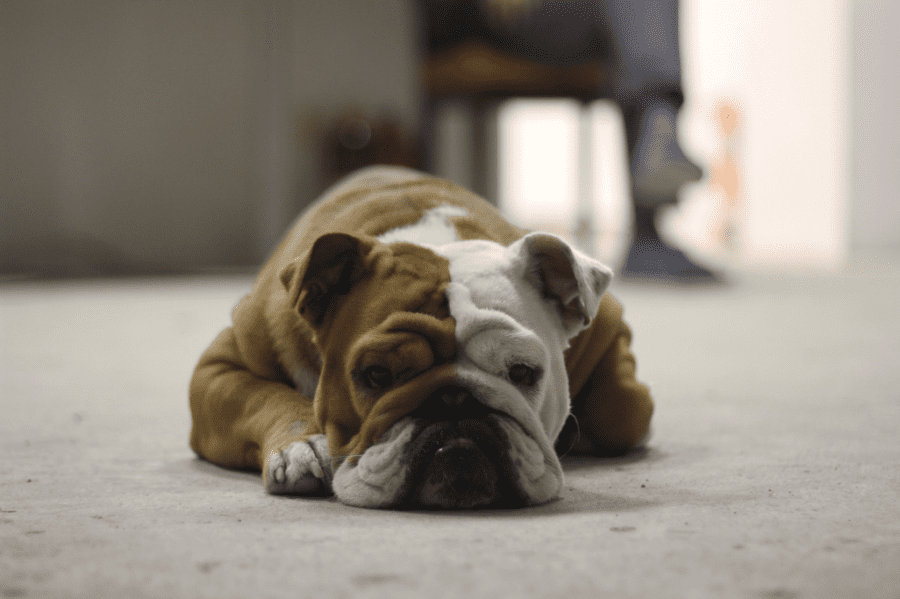
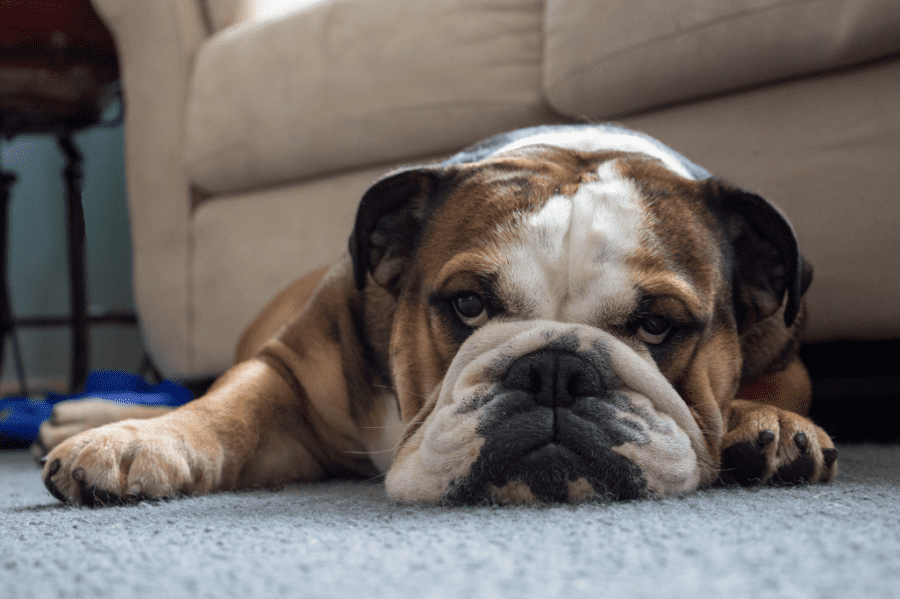




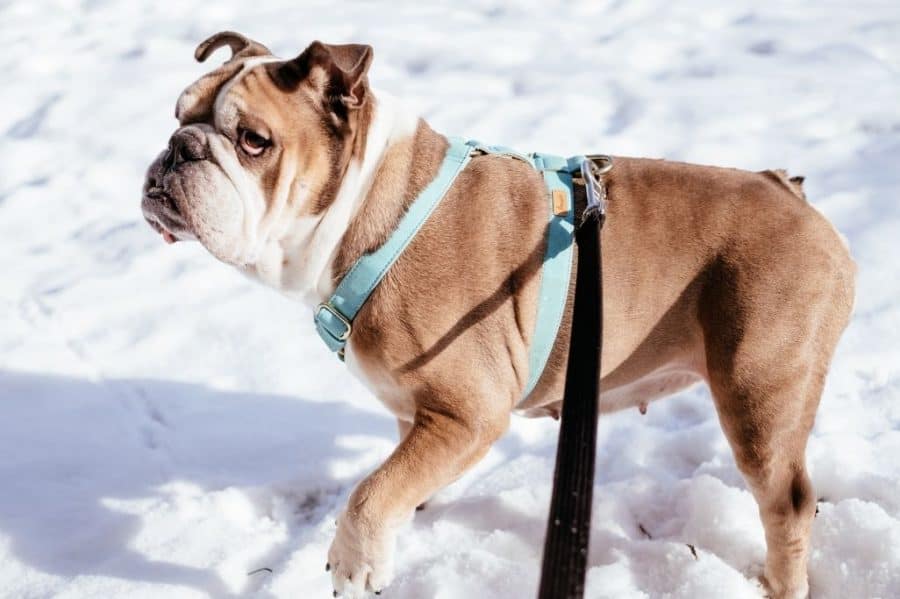

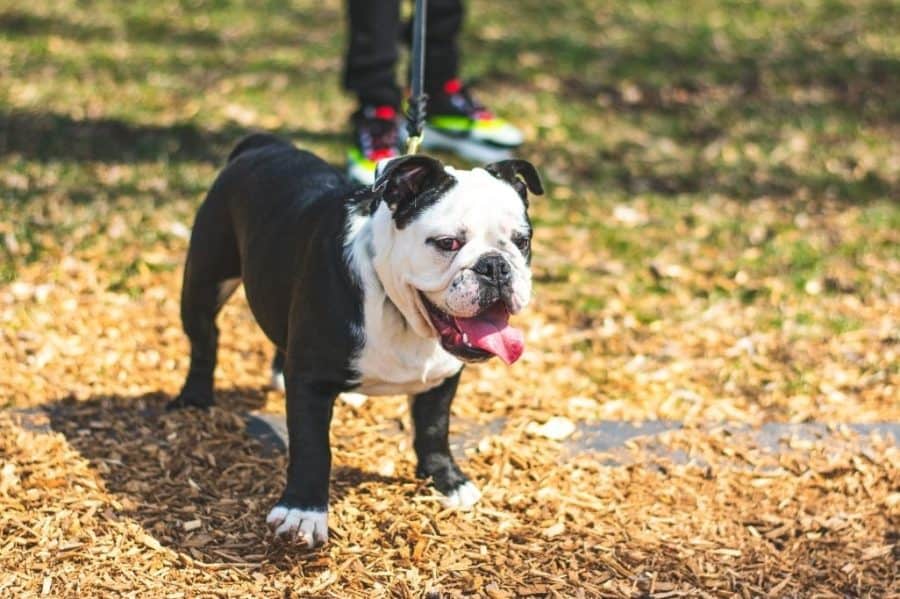









[…] size of these dogs is generally larger to other medium sized dogs like the Bulldogs and […]
[…] Bulldogs are well known for their brave and yet get calm characteristic. Their uniqueness with the sourmug face have made them quite popular over time. […]
[…] Mellow tempered Bulldog are known for their aggression and yet their loving […]
[…] English bulldog […]